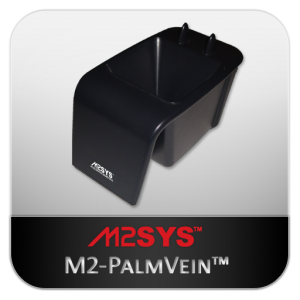False Accept Rate – An Important Biometric Term To Know And Understand
 Whew. It’s been a while since we penned another blog posting for our “Important Biometric Terminology To Know” category – almost 6 months. Our apologies, but there has been so much to talk about since then we plumb forgot that we need to step up the effort and help to educate our readers on biometric terms that will help you to make a smart decision on which biometric system is best for you.
Whew. It’s been a while since we penned another blog posting for our “Important Biometric Terminology To Know” category – almost 6 months. Our apologies, but there has been so much to talk about since then we plumb forgot that we need to step up the effort and help to educate our readers on biometric terms that will help you to make a smart decision on which biometric system is best for you.
So we’re off – let’s take a closer look at the term “False Accept Rate,” what it means and why you should add this term to your biometric vocabulary.
Can’t Stress Due Diligence Enough
As we pointed out in our post last year about False Rejection Rates, we can’t stress enough that before purchasing a biometric identification system, it’s a smart idea to familiarize yourself with industry terminology before soliciting bids from biometric vendors. You wouldn’t make it as a Day trader unless you knew what a derivative was or what the term EBITDA meant. It would be tough to find a bargain on a house unless you were familiar with the term “short sale” or the difference between a fixed-rate mortgage and an adjustable rate mortgage.
The same concept applies to biometrics. If you learn the industry terminology, it helps you to make a more educated decision on the biometric system that best suits your unique needs and maximize success.
Let’s quickly revisit the common questions to ask when researching biometric reader:
- How demographically diverse is my workforce?
- What is the age range of the people using the biometric reader?
- What type of physical environment will the biometric reader be deployed in (e.g. –factory, office, indoors, outdoors, etc.)?
- How large will my database be of enrolled individuals in the system?
To reiterate from our posting on False Rejection Rates: Choosing the proper biometric reader for your workforce and environment can be better served by researching the answers to these questions before you make your decision so you end up using a reader that is user friendly and will provide you with the highest degree of accuracy and longevity.
What is False Accept Rate (FAR)? Why Do I Need To Know This?
Webopedia defines False Accept Rate as:
In biometrics, the instance of a security system incorrectly verifying or identifying an unauthorized person. Also referred to as a type II error, a false acceptance typically is considered the most serious of biometric security errors as it gives unauthorized users access to systems that expressly are trying to keep them out.
For example: A fitness center uses biometric technology at their check-in desk for membership management. A non-member enters the facility and places their finger on a fingerprint reader which incorrectly identifies them as a paying member and allows them access to the facility. Uh, not exactly why you purchased the biometric identification system in the first place, is it?
Does the Type of Biometric Reader I Use Affect the FAR?
Biometric readers have different characteristics and limitations that make them susceptible to an increased FAR. When you deploy a biometric system, after installing the software and connecting the biometric reader an enrollment template must be created for each individual that will be using the system. Any subsequent biometric scans are then matched against that template which means that that the integrity of the template must be high quality to avoid problems with false accepts. Different biometric readers have varying levels of FAR.
As you climb the scale of biometric devices from fingerprint to vascular biometric recognition (fingervein and palm vein readers) FAR percentages drop significantly because fingerprint integrity is not a factor when matching a scan to an enrollment template. Vascular biometrics uses near infrared scans to capture the vein patterns beneath the finger or the palm for recognition and identification purposes resulting in increased accuracy. FAR is still a factor for vascular technology but to a much lesser extent because the condition of the skin is not a factor as it is with fingerprint technology.
Feels Good To Know What You’re Talking About Doesn’t It?
When researching a biometric software and hardware provider, provide as many details as possible. Describe in detail the demographics of your end users. Talk about the physical environment that your biometric readers will be deployed. Ask a lot of questions. If you don’t know where to start, call us or e-mail us and we will help make it easier for you to get the solution that works even if it isn’t our own.
Was this blog post helpful to explain the importance of understanding FAR? Please let us know in the comments below…










Pingback: How To Properly Clean Biometric Hardware - M2SYS Blog On Biometric Technology